
Manual No.: 14597001
Date of Release 10.12.2009
MAPS
Instruction Manual

MAPS
Instruction Manual
Table of Contents Page
User’s Guide ............................................................... 3
Quick Reference Guide ............................................ 99
Always state Serial No and Voltage/frequency if you have technical questions or when ordering spare parts.
You will find the Serial No. and Voltage on the type plate of the machine itself. We may also need the Date
and Article No of the manual. This information is found on the front cover.
The following restrictions should be observed, as violation of the restrictions may cause cancellation of
Struers legal obligations:
Instruction Manuals: Struers Instruction Manual may only be used in connection with Struers equipment
covered by the Instruction Manual.
Service Manuals: Struers Service Manual may only be used by a trained technician authorised by Struers.
The Service Manual may only be used in connection with Struers equipment covered by the Service Manual.
Struers assumes no responsibility for errors in the manual text/illustrations. The information in this manual is
subject to change without notice. The manual may mention accessories or parts not included in the present
version of the equipment.
The contents of this manual are the property of Struers. Reproduction of any part of this manual without the
written permission of Struers is not allowed.
All rights reserved. © Struers 2009.
Struers A/S
Pederstrupvej 84
DK-2750 Ballerup
Denmark
Telephone +45 44 600 800
Fax +45 44 600 801

MAPS Safety Precaution Sheet
Instruction Manual
MAPS
Safety Precaution Sheet
To be read carefully
before use
1. The operator should be fully aware of the use of the module according
to the Instruction Manual.
2. The module must be installed in compliance with local safety
regulations.
3. The actual voltage must correspond to the voltage stated on the side of
the module. The module must be earthed.
4. The water connections must be leakproof. Cut the water off if the
module stands idle for a long period.
5. Be careful that the emergency stop is in order.
6. Always clamp the specimens securely in the specimen holder disc
before starting the preparation process.
7. Never touch any moving parts of MAPS, i.e. specimen holder discs,
arm or preparation discs, until they stop completely.
8. If any malfunction or unusual noise is detected, the apparatus should
be stopped immediately and technical service called.
The equipment should only be used for its intended purpose and as detailed in the Instruction Manual.
The equipment is designed for use with consumables supplied by Struers. If subjected to misuse, improper
installation, alteration, neglect, accident or improper repair, Struers will accept no responsibility for
damage(s) to the user or the equipment.
Dismantling of any part of the equipment, during service or repair, should always be performed by a qualified
technician (electromechanical, electronic, mechanical, pneumatic, etc.)


MAPS Table of Contents
Instruction Manual
1
Table of contents Page
1. Introduction
MAPS - Automated Preparation ......................................................... 5
Development or production? ..................................................... 6
MAPS Module design ......................................................................... 6
Work stations ............................................................................ 6
Cleaning station ........................................................................ 8
Conveyor belts .......................................................................... 8
Single Unit without Conveyors .................................................. 8
Preparation methods .......................................................................... 8
Method steps ............................................................................ 8
Step parameters ....................................................................... 9
Preparation Module Software ............................................................. 9
Production line .......................................................................... 9
Menu structure ........................................................................ 10
2. Operation
Controls ............................................................................................ 11
Main controls ........................................................................... 12
PC keys/function keys ............................................................. 12
Struers keys ............................................................................ 13
Dosing controls ....................................................................... 13
Security system ....................................................................... 13
Numerical keys ....................................................................... 13
Manual predosing ................................................................... 14
Software ........................................................................................... 15
Start screens ........................................................................... 15
Main menu .............................................................................. 16
Process mode .................................................................................. 17
F2 P-CTRL, Process control ................................................... 20
Development mode .......................................................................... 22
F1 P-EDIT (development mode) ............................................. 25
Option menus .......................................................................... 26
F6 M-FUNC, Manual functions ............................................... 28
Method database ............................................................................. 30
F1 EDIT (Method database) ................................................... 32
F3 COPY ................................................................................. 33
F7 DELETE ............................................................................. 34
Consumables ................................................................................... 35
Refill/dispose liquids ............................................................... 35
Changing preparation discs .................................................... 38
Changing grinding stone ......................................................... 39

MAPS
Instruction Manual
2
3. Preparation of specimens
Preparation methods ........................................................................ 41
Struers Metalog Guide ™ ................................................................. 41
4. Maintenance
Mechanical maintenance ................................................................. 42
Daily ........................................................................................ 42
Every evening or before breaks of more than 8 hours ............ 43
Every second day ................................................................... 44
Every week or before breaks of more than 24 hours .............. 44
Every month ............................................................................ 44
Software maintenance ..................................................................... 46
Configuration menu ................................................................. 46
Discs/Cloths, configuration ..................................................... 47
Lubricants, configuration ......................................................... 48
Suspensions, configuration ..................................................... 49
Cleaning programs, configuration ........................................... 50
Module configuration ............................................................... 51
5. Accessories
Preparation modules ........................................................................ 53
Conveyor belt ................................................................................... 53
Water recirculation ........................................................................... 53
Liquids supply .................................................................................. 54
Specimen handling ........................................................................... 54
Specimen holder discs ..................................................................... 55
Preparation stones and discs ........................................................... 55
Software ........................................................................................... 56
Tools ................................................................................................ 56
6. Installation
External hose connections ............................................................... 57
Connection tube collar for optional exhaustion ................................ 57
MAPS data communication and control ........................................... 58
7. Trouble-shooting
Error code listing .............................................................................. 59
Function Errors (Fatal errors) .................................................. 59

MAPS Table of Contents
Instruction Manual
3
8. Spare Parts ............................................................................. 69
9. Technical data
Preparation module .......................................................................... 70
Electrical data ......................................................................... 70
Connections ............................................................................ 71
Main data ................................................................................ 72
Specimen holder discs ............................................................ 72
Transportation arm .................................................................. 72
Plane grinding work station ..................................................... 72
Fine grinding and polishing work station ................................. 72
Cleaning station ...................................................................... 73
Built-in computer facilities ....................................................... 73
External computer facilities (accessory) ................................. 73
Method programming .............................................................. 73
Conveyor belt ................................................................................... 74
Belt connections ...................................................................... 74
Belt main dimensions .............................................................. 74
General data, Conveyor belt ................................................... 74
Belt capacity ............................................................................ 74
Recirculation cooling unit ................................................................. 74
Cooling unit capacity ............................................................... 74
Dosing system .................................................................................. 74
Bottle unit capacity .................................................................. 74
Alcohol separation unit capacity ............................................. 74
MAPS Master, PC kit ....................................................................... 75
Code numbering of MAPS modules ................................................. 75
Work station codes ................................................................. 75
Dosing system/Bottle unit codes ............................................. 75
Bottle unit numbering .............................................................. 76
Construction descriptions ................................................................. 77
Specimen holder disc .............................................................. 78
Transportation arm .................................................................. 79
Plane grinding station ............................................................. 79
Dresser for stone .................................................................... 80
Fine grinding/polishing station ................................................ 80
Cleaning station ...................................................................... 81
Recirculation cooling Unit ....................................................... 82
Alcohol separation unit ............................................................ 83
Dosing system ........................................................................ 83
Dosing system level indicator ................................................. 83
Conveyor belt .......................................................................... 84
Drying fan ................................................................................ 85
Safety ............................................................................................... 85

MAPS
Instruction Manual
4
10. Method parameter values
Method parameters .......................................................................... 86
Method number in the module database ................................ 86
Method description .................................................................. 86
Method number in the MAPS Master PC database ................ 86
Step parameters ............................................................................... 88
Work position .......................................................................... 88
Grinding/polishing disc ............................................................ 88
Grain/grit size of disc .............................................................. 88
Suspension ............................................................................. 88
Lubricant ................................................................................. 89
Rotational speed of the disc .................................................... 89
Rotational direction of the specimen holder ............................ 89
Cleaning program number ...................................................... 90
Dressing depth ........................................................................ 90
Phase parameters ............................................................................ 91
Process time ........................................................................... 91
Stock removal ......................................................................... 91
Force ....................................................................................... 91
Dosing level for suspension (Susp) and lubricant (Lub.) ........ 92
Positioning the transportation arm during the process ..................... 94
Cleaning programs ........................................................................... 95
Disc cooling ...................................................................................... 96
11. Index ......................................................................................... 97

MAPS Introduction
Instruction Manual
5
1. Introduction
MAPS preparation module is not only powerful and efficient - it is
easy to use. All the important functions are available on the front
panel keyboard equipped with modern touch buttons and LC display.
Apart from feeding the preparation module with specimen holders
and changing consumables it is seldom necessary to handle the
specimens manually.
Front panel with LC display and PC keys (standard)
Conveyor delivery module with drying fan (optional)
Conveyor feed module (optional)
Dosing systems with bottle units (optional)
Recirculation cooling system and separation unit (optional)
MAPS - Automated Preparation

MAPS Introduction
Instruction Manual
6
You may use MAPS in two ways - or in a combination of both:
Before you can run MAPS as an automated system you need to
have a set of thoroughly tested preparation methods. You design and
test the methods in the DEVELOPMENT MODE (see Section 2,
Operation).
To run the preparation methods you need a queue system capable of
handling a large number of different materials. This is achieved in the
PROCESS MODE (see Section 2, Operation).
Which mode to use largely depends on the type of preparation work
you are doing. A great number of identical preparations may be
carried out in the PROCESS MODE, whereas experiments or test
preparations are more likely to be done in DEVELOPMENT MODE.
A MAPS preparation module is either equipped with 1 plane grinding
and 1 fine grinding/polishing work station (MAPSE/MAPON) or 2 fine
grinding/polishing work stations (MAPFI/MAPVA). There are 2
different basic work station types:
Stone/Diamond Grinding
: a heavy duty work station equipped with
dresser and separate safety lid. Version available with grinding stone
(PLAN/POL) or diamond disc (DIA/POL). Used for plane grinding
(PG).
Fine Grinding/Polishing
: an open work station with room for many
types of easily exchangeable discs (POL/POL). Used for fine
grinding (FG), diamond polishing (DP) or oxide polishing (OP).
All the above types of work station can be equipped with an optional
Recirculation cooling unit (MAPRE): see Section 5, Accessories.
Basic MAPS module configurations
Type 1st
Work station 2nd
Work station Code word
PLAN/POL Plane grinding Fine grinding/
polishing MAPSE/
MAPON
DIA/POL Plane grinding Fine grinding/
polishing
POL/POL Fine grinding/
polishing Fine grinding/
polishing MAPFI/
MAPVA
Development or production?
Development mode
Process mode
MAPS Module design
Work stations

MAPS Introduction
Instruction Manual
7
Full MAPS configuration with 5 modules (example)

MAPS Introduction
Instruction Manual
8
All MAPS module configurations have a programmable built-in
cleaning station. The automatic cleaning stations work by high-
pressure water rinsing, alcohol cleaning and air-drying. The cleaning
station is placed between the two work stations. All cleaning of
specimen holder discs take place in the cleaning station.
If you have more than one MAPS preparation module you need a
number of conveyor belts to transport the specimen holder discs
between the preparation modules. The belts work automatically,
communicating with each other and the MAPS modules through
optical sensors.
The special version of MAPS for use as a single unit without
conveyors has the following specifications which are different from
the standard specifications of a MAPS preparation module:
Instead of conveyor belts you have a combined feed and delivery
station placed opposite to the front control panel side.
The single unit without conveyors is provided with 2 extra safety
guards compared to the standard MAPS module. The 2 extra
safety guards are placed in the back of the machine, facilitating
the access to the feed and delivery station.
A preparation method is divided into a number of steps, usually
between 5 and 10 steps (See Section 3, Preparation according to
Struers Metalog Guide ™). Each step belongs to one of the following
types:
For plane grinding (PG) you need a MAPSE or MAPON preparation
module equipped with a grinding stone or a Diamond Pad. As the
MAPSE/MAPON preparation module is also equipped with a fine
grinding/polishing work station, the module may be used as a single
unit without conveyors.
For fine grinding (FG) you can use both a MAPSE/MAPON
preparation module (one fine grinding/polishing work station) or a
MAPFI/MAPVA preparation module (two fine grinding/polishing work
stations).
You may use all types of MAPS preparation modules for both
diamond polishing (DP) or in case of soft and ductile materials:
Oxide polishing (OP) or diamond polishing (DP) are done on a fine
grinding/polishing work station.
Cleaning station
Conveyor belts
Single Unit without Conveyors
Preparation methods
Method steps
PG = Plane Grinding
FG = Fine Grinding
DP = Diamond Polishing
OP = Oxide Polishing

MAPS Introduction
Instruction Manual
9
The MAPS preparation module database enables you to fine-tune all
details of the method, including the parameters of the individual
method steps (see also Section 10, Method parameter values).
PG
: stone/Diamond Pad including grain size, stock removal depth or
timer- based grinding, force on specimens, lubrication, dressing
depth (only for stone) and disc speed/rotational direction.
FG
: grinding disc including grain size, timer, force on specimens,
lubrication and disc speed/rotational direction.
DP
: polishing disc, timer, force on specimens, suspension type,
lubricant and disc speed/rotational direction.
OP
: as above but without lubricant.
Cleaning
: all step types have a choice of 10 user defined cleaning
programs.
The MAPS preparation modules are each equipped with a built-in
preparation method database and editor. The MAPS preparation
module database contains 30 methods in all, each with 1-10 steps.
The database is designed to work both within the preparation module
or connected to the optional MAPS Master PC database program.
In the method description in the database, you appoint each
grinding/polishing step to a position, i.e. a disc on a specific module.
When the conveyor belt delivers the specimen holder, the receiving
module automatically "knows" which work station to use. If the
method does not use any of the module's work stations (position
numbers), the specimen holder disc is transported to the next
preparation module.
To edit the methods, MAPS provides you with a Method editor. The
editor allows you to change the data in a method and send or receive
a method between the Method editor and the optional MAPS Master
PC program.
MAPS is a production line system with a number of grinding and
polishing discs. Each module may be identified by a specific module
number which includes 2 work station identification numbers, called
"position numbers". See also Section 10, Method parameter values.
On the LC display you can monitor the preparation process. You can
even manipulate the methods during the process if you work in
Development mode.
Step parameters
Preparation Module Software
Production line

MAPS Introduction
Instruction Manual
10
The MAPS preparation module software supports processing,
monitoring and editing of preparation methods. The program is
based upon a database with room for detailed information on up to
30 methods.
You can use the MAPS front panel almost like a PC, including easy
LC display menus and well-known computer keys like ENTER, ESC
and PGDN/PGUP. The menu structure reflects the main functions of
MAPS; Process mode, Development mode, Database editing and
configuration of consumables.
Menu structure
Main
Menu
Process Mode Method Database Configuration
Development
Mode

MAPS Operation
Instruction Manual
11
2. Operation
PC keys/function keys
Struers keys
Numerical keys
Controls

MAPS Operation
Instruction Manual
12
Main switch
: blue/grey switch placed on the front panel below the
keyboard.
Emergency stop
: red push button placed on the front below the
keyboard (on certain models two emergency buttons are placed on
the left and right panels of the module).
ENTER accepts a parameter or shows a pick list of consumables
to choose from ("Option menu"). In the option menus
ENTER is used to accept the option parameter.
ESC (escape) is used to return to the previous screen.
DEL (delete) deletes the previous digit, like the backspace key
on
a PC.
ARROW keys are used for selecting the desired items. Other uses
of the ARROW keys are explained in the function tables
for each screen.
PGDN/
PGUP In some of the option menus, you can scroll up and down
through several pages of information. In the Method edit
screen, the PGDN/PGUP keys are used for moving
between method steps.
F1 to F8 are used to activate various functions and to change
screens. The function keys are explained in a table below each
screen.
Main controls
PC keys/function keys
PC keys
Function keys

MAPS Operation
Instruction Manual
13
Start
: re-starts the selected method.
Stop
: stops any active method or mechanical function.
Continue
: continues a method process that has been temporarily
stopped.
Predose
: starts the polishing disc rotating. Used while predosing on
the polishing cloth.
Lubricant
: forced manual dosing of lubricant on the chosen polishing
disc.
Abrasive
: forced manual dosing of abrasive on the chosen grinding
disc.
Lock MAPS
: locks the MAPS system to prevent unauthorized access
to the module. A special Security Manual Sheet has been delivered
with the MAPS module. If you need an extra copy, please call your
local Struers dealer.
To type method number and other parameters (data), press the
desired number on the keypad and then press ENTER to accept the
parameter.
Struers keys
Dosing controls
Security system
Numerical keys

MAPS Operation
Instruction Manual
14
You can perform manually controlled predosing by using the
following Struers keys:
Predose: rotate the disc selected by the actual method step. The key
does not
perform the actual predosing by itself.
Lubricant
: dose with lubricant, if available in the actual method step.
Abrasive
: dose with abrasive, if available in the actual method step.
Disc position and dosing type depend on the parameters of the
present method step.
Manual predosing

MAPS Operation
Instruction Manual
15
When you turn on the MAPS preparation module with the main
switch, a short message: "MAPS CONSOLE READY" and the MAPS
screen appear. Press ENTER to activate the program. If you have
more than one preparation module you must start each module
individually.
Software
Start screens
Start screen for PLAN/POL (Stone
plane grinding/polishing) module
/// Struers MAPS
=========================================
Version: 1.08.00
Grind/Polish
Press ENTER to continue
Start screen for POL/POL
(fine grinding/polishing) module
/// Struers MAPS
=========================================
Version: 1.08.00
Polish/Polish
Press ENTER to continue

MAPS Operation
Instruction Manual
16
Having pressed ENTER, the MAIN MENU screen appears.
Keys
Explanation
ARROW
UP/DOWN
Select a menu
ENTER Activate a menu
Start screen for DIA/POL (Diamond
plane grinding/polishing) module
/// Struers MAPS
=========================================
Version: 1.08.00
Diamond grinding/Polish
Press ENTER to continue
Main menu
MAIN MENU
PROCESS MODE
DEVELOPMENT MODE
METHOD DATABASE
CONFIGURATION
Press ENTER key to accept choice
F1: F2: F3: F4:
F5: F6: F7: F8:
La page est en cours de chargement...
La page est en cours de chargement...
La page est en cours de chargement...
La page est en cours de chargement...
La page est en cours de chargement...
La page est en cours de chargement...
La page est en cours de chargement...
La page est en cours de chargement...
La page est en cours de chargement...
La page est en cours de chargement...
La page est en cours de chargement...
La page est en cours de chargement...
La page est en cours de chargement...
La page est en cours de chargement...
La page est en cours de chargement...
La page est en cours de chargement...
La page est en cours de chargement...
La page est en cours de chargement...
La page est en cours de chargement...
La page est en cours de chargement...
La page est en cours de chargement...
La page est en cours de chargement...
La page est en cours de chargement...
La page est en cours de chargement...
La page est en cours de chargement...
La page est en cours de chargement...
La page est en cours de chargement...
La page est en cours de chargement...
La page est en cours de chargement...
La page est en cours de chargement...
La page est en cours de chargement...
La page est en cours de chargement...
La page est en cours de chargement...
La page est en cours de chargement...
La page est en cours de chargement...
La page est en cours de chargement...
La page est en cours de chargement...
La page est en cours de chargement...
La page est en cours de chargement...
La page est en cours de chargement...
La page est en cours de chargement...
La page est en cours de chargement...
La page est en cours de chargement...
La page est en cours de chargement...
La page est en cours de chargement...
La page est en cours de chargement...
La page est en cours de chargement...
La page est en cours de chargement...
La page est en cours de chargement...
La page est en cours de chargement...
La page est en cours de chargement...
La page est en cours de chargement...
La page est en cours de chargement...
La page est en cours de chargement...
La page est en cours de chargement...
La page est en cours de chargement...
La page est en cours de chargement...
La page est en cours de chargement...
La page est en cours de chargement...
La page est en cours de chargement...
La page est en cours de chargement...
La page est en cours de chargement...
La page est en cours de chargement...
La page est en cours de chargement...
La page est en cours de chargement...
La page est en cours de chargement...
La page est en cours de chargement...
La page est en cours de chargement...
La page est en cours de chargement...
La page est en cours de chargement...
La page est en cours de chargement...
La page est en cours de chargement...
La page est en cours de chargement...
La page est en cours de chargement...
La page est en cours de chargement...
La page est en cours de chargement...
La page est en cours de chargement...
La page est en cours de chargement...
La page est en cours de chargement...
La page est en cours de chargement...
La page est en cours de chargement...
La page est en cours de chargement...
La page est en cours de chargement...
La page est en cours de chargement...
La page est en cours de chargement...
La page est en cours de chargement...
La page est en cours de chargement...
La page est en cours de chargement...
La page est en cours de chargement...
La page est en cours de chargement...
La page est en cours de chargement...
La page est en cours de chargement...
La page est en cours de chargement...
La page est en cours de chargement...
La page est en cours de chargement...
La page est en cours de chargement...
La page est en cours de chargement...
La page est en cours de chargement...
La page est en cours de chargement...
La page est en cours de chargement...
La page est en cours de chargement...
La page est en cours de chargement...
La page est en cours de chargement...
La page est en cours de chargement...
La page est en cours de chargement...
La page est en cours de chargement...
La page est en cours de chargement...
La page est en cours de chargement...
La page est en cours de chargement...
La page est en cours de chargement...
La page est en cours de chargement...
La page est en cours de chargement...
La page est en cours de chargement...
La page est en cours de chargement...
La page est en cours de chargement...
La page est en cours de chargement...
La page est en cours de chargement...
La page est en cours de chargement...
La page est en cours de chargement...
La page est en cours de chargement...
La page est en cours de chargement...
La page est en cours de chargement...
La page est en cours de chargement...
La page est en cours de chargement...
La page est en cours de chargement...
La page est en cours de chargement...
La page est en cours de chargement...
La page est en cours de chargement...
La page est en cours de chargement...
La page est en cours de chargement...
La page est en cours de chargement...
La page est en cours de chargement...
La page est en cours de chargement...
La page est en cours de chargement...
La page est en cours de chargement...
La page est en cours de chargement...
La page est en cours de chargement...
La page est en cours de chargement...
La page est en cours de chargement...
La page est en cours de chargement...
La page est en cours de chargement...
La page est en cours de chargement...
La page est en cours de chargement...
La page est en cours de chargement...
La page est en cours de chargement...
La page est en cours de chargement...
La page est en cours de chargement...
La page est en cours de chargement...
La page est en cours de chargement...
La page est en cours de chargement...
La page est en cours de chargement...
La page est en cours de chargement...
La page est en cours de chargement...
La page est en cours de chargement...
La page est en cours de chargement...
La page est en cours de chargement...
La page est en cours de chargement...
La page est en cours de chargement...
La page est en cours de chargement...
La page est en cours de chargement...
La page est en cours de chargement...
La page est en cours de chargement...
La page est en cours de chargement...
La page est en cours de chargement...
La page est en cours de chargement...
La page est en cours de chargement...
La page est en cours de chargement...
La page est en cours de chargement...
La page est en cours de chargement...
La page est en cours de chargement...
La page est en cours de chargement...
La page est en cours de chargement...
La page est en cours de chargement...
La page est en cours de chargement...
La page est en cours de chargement...
La page est en cours de chargement...
La page est en cours de chargement...
La page est en cours de chargement...
La page est en cours de chargement...
La page est en cours de chargement...
La page est en cours de chargement...
La page est en cours de chargement...
La page est en cours de chargement...
La page est en cours de chargement...
La page est en cours de chargement...
La page est en cours de chargement...
La page est en cours de chargement...
La page est en cours de chargement...
La page est en cours de chargement...
La page est en cours de chargement...
La page est en cours de chargement...
La page est en cours de chargement...
La page est en cours de chargement...
La page est en cours de chargement...
La page est en cours de chargement...
La page est en cours de chargement...
La page est en cours de chargement...
La page est en cours de chargement...
La page est en cours de chargement...
La page est en cours de chargement...
La page est en cours de chargement...
La page est en cours de chargement...
La page est en cours de chargement...
La page est en cours de chargement...
La page est en cours de chargement...
La page est en cours de chargement...
La page est en cours de chargement...
La page est en cours de chargement...
La page est en cours de chargement...
La page est en cours de chargement...
La page est en cours de chargement...
La page est en cours de chargement...
La page est en cours de chargement...
La page est en cours de chargement...
La page est en cours de chargement...
La page est en cours de chargement...
La page est en cours de chargement...
La page est en cours de chargement...
La page est en cours de chargement...
La page est en cours de chargement...
La page est en cours de chargement...
La page est en cours de chargement...
La page est en cours de chargement...
La page est en cours de chargement...
La page est en cours de chargement...
La page est en cours de chargement...
La page est en cours de chargement...
La page est en cours de chargement...
La page est en cours de chargement...
La page est en cours de chargement...
La page est en cours de chargement...
La page est en cours de chargement...
La page est en cours de chargement...
La page est en cours de chargement...
La page est en cours de chargement...
La page est en cours de chargement...
La page est en cours de chargement...
La page est en cours de chargement...
La page est en cours de chargement...
La page est en cours de chargement...
La page est en cours de chargement...
La page est en cours de chargement...
La page est en cours de chargement...
La page est en cours de chargement...
La page est en cours de chargement...
La page est en cours de chargement...
La page est en cours de chargement...
La page est en cours de chargement...
La page est en cours de chargement...
La page est en cours de chargement...
La page est en cours de chargement...
La page est en cours de chargement...
La page est en cours de chargement...
La page est en cours de chargement...
La page est en cours de chargement...
La page est en cours de chargement...
La page est en cours de chargement...
La page est en cours de chargement...
La page est en cours de chargement...
La page est en cours de chargement...
La page est en cours de chargement...
La page est en cours de chargement...
La page est en cours de chargement...
La page est en cours de chargement...
La page est en cours de chargement...
La page est en cours de chargement...
La page est en cours de chargement...
La page est en cours de chargement...
La page est en cours de chargement...
La page est en cours de chargement...
La page est en cours de chargement...
La page est en cours de chargement...
La page est en cours de chargement...
La page est en cours de chargement...
La page est en cours de chargement...
La page est en cours de chargement...
La page est en cours de chargement...
La page est en cours de chargement...
La page est en cours de chargement...
La page est en cours de chargement...
La page est en cours de chargement...
La page est en cours de chargement...
La page est en cours de chargement...
La page est en cours de chargement...
La page est en cours de chargement...
La page est en cours de chargement...
La page est en cours de chargement...
La page est en cours de chargement...
La page est en cours de chargement...
La page est en cours de chargement...
La page est en cours de chargement...
La page est en cours de chargement...
La page est en cours de chargement...
-
 1
1
-
 2
2
-
 3
3
-
 4
4
-
 5
5
-
 6
6
-
 7
7
-
 8
8
-
 9
9
-
 10
10
-
 11
11
-
 12
12
-
 13
13
-
 14
14
-
 15
15
-
 16
16
-
 17
17
-
 18
18
-
 19
19
-
 20
20
-
 21
21
-
 22
22
-
 23
23
-
 24
24
-
 25
25
-
 26
26
-
 27
27
-
 28
28
-
 29
29
-
 30
30
-
 31
31
-
 32
32
-
 33
33
-
 34
34
-
 35
35
-
 36
36
-
 37
37
-
 38
38
-
 39
39
-
 40
40
-
 41
41
-
 42
42
-
 43
43
-
 44
44
-
 45
45
-
 46
46
-
 47
47
-
 48
48
-
 49
49
-
 50
50
-
 51
51
-
 52
52
-
 53
53
-
 54
54
-
 55
55
-
 56
56
-
 57
57
-
 58
58
-
 59
59
-
 60
60
-
 61
61
-
 62
62
-
 63
63
-
 64
64
-
 65
65
-
 66
66
-
 67
67
-
 68
68
-
 69
69
-
 70
70
-
 71
71
-
 72
72
-
 73
73
-
 74
74
-
 75
75
-
 76
76
-
 77
77
-
 78
78
-
 79
79
-
 80
80
-
 81
81
-
 82
82
-
 83
83
-
 84
84
-
 85
85
-
 86
86
-
 87
87
-
 88
88
-
 89
89
-
 90
90
-
 91
91
-
 92
92
-
 93
93
-
 94
94
-
 95
95
-
 96
96
-
 97
97
-
 98
98
-
 99
99
-
 100
100
-
 101
101
-
 102
102
-
 103
103
-
 104
104
-
 105
105
-
 106
106
-
 107
107
-
 108
108
-
 109
109
-
 110
110
-
 111
111
-
 112
112
-
 113
113
-
 114
114
-
 115
115
-
 116
116
-
 117
117
-
 118
118
-
 119
119
-
 120
120
-
 121
121
-
 122
122
-
 123
123
-
 124
124
-
 125
125
-
 126
126
-
 127
127
-
 128
128
-
 129
129
-
 130
130
-
 131
131
-
 132
132
-
 133
133
-
 134
134
-
 135
135
-
 136
136
-
 137
137
-
 138
138
-
 139
139
-
 140
140
-
 141
141
-
 142
142
-
 143
143
-
 144
144
-
 145
145
-
 146
146
-
 147
147
-
 148
148
-
 149
149
-
 150
150
-
 151
151
-
 152
152
-
 153
153
-
 154
154
-
 155
155
-
 156
156
-
 157
157
-
 158
158
-
 159
159
-
 160
160
-
 161
161
-
 162
162
-
 163
163
-
 164
164
-
 165
165
-
 166
166
-
 167
167
-
 168
168
-
 169
169
-
 170
170
-
 171
171
-
 172
172
-
 173
173
-
 174
174
-
 175
175
-
 176
176
-
 177
177
-
 178
178
-
 179
179
-
 180
180
-
 181
181
-
 182
182
-
 183
183
-
 184
184
-
 185
185
-
 186
186
-
 187
187
-
 188
188
-
 189
189
-
 190
190
-
 191
191
-
 192
192
-
 193
193
-
 194
194
-
 195
195
-
 196
196
-
 197
197
-
 198
198
-
 199
199
-
 200
200
-
 201
201
-
 202
202
-
 203
203
-
 204
204
-
 205
205
-
 206
206
-
 207
207
-
 208
208
-
 209
209
-
 210
210
-
 211
211
-
 212
212
-
 213
213
-
 214
214
-
 215
215
-
 216
216
-
 217
217
-
 218
218
-
 219
219
-
 220
220
-
 221
221
-
 222
222
-
 223
223
-
 224
224
-
 225
225
-
 226
226
-
 227
227
-
 228
228
-
 229
229
-
 230
230
-
 231
231
-
 232
232
-
 233
233
-
 234
234
-
 235
235
-
 236
236
-
 237
237
-
 238
238
-
 239
239
-
 240
240
-
 241
241
-
 242
242
-
 243
243
-
 244
244
-
 245
245
-
 246
246
-
 247
247
-
 248
248
-
 249
249
-
 250
250
-
 251
251
-
 252
252
-
 253
253
-
 254
254
-
 255
255
-
 256
256
-
 257
257
-
 258
258
-
 259
259
-
 260
260
-
 261
261
-
 262
262
-
 263
263
-
 264
264
-
 265
265
-
 266
266
-
 267
267
-
 268
268
-
 269
269
-
 270
270
-
 271
271
-
 272
272
-
 273
273
-
 274
274
-
 275
275
-
 276
276
-
 277
277
-
 278
278
-
 279
279
-
 280
280
-
 281
281
-
 282
282
-
 283
283
-
 284
284
-
 285
285
-
 286
286
-
 287
287
-
 288
288
-
 289
289
-
 290
290
-
 291
291
-
 292
292
-
 293
293
-
 294
294
-
 295
295
-
 296
296
-
 297
297
-
 298
298
-
 299
299
-
 300
300
-
 301
301
-
 302
302
-
 303
303
-
 304
304
-
 305
305
-
 306
306
-
 307
307
-
 308
308
-
 309
309
-
 310
310
-
 311
311
-
 312
312
-
 313
313
dans d''autres langues
- English: Struers MAPS User manual
- Deutsch: Struers MAPS Benutzerhandbuch
Documents connexes
-
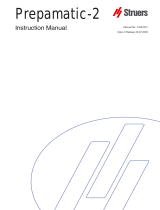 Struers Prepamatic-2 Manuel utilisateur
Struers Prepamatic-2 Manuel utilisateur
-
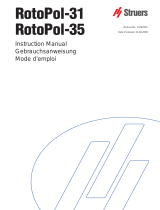 Struers RotoPol-31 Manuel utilisateur
Struers RotoPol-31 Manuel utilisateur
-
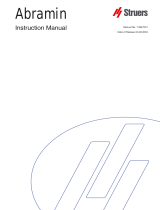 Struers Abramin Manuel utilisateur
Struers Abramin Manuel utilisateur
-
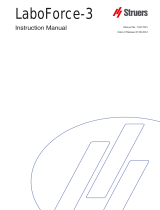 Struers LaboForce-3 Manuel utilisateur
Struers LaboForce-3 Manuel utilisateur
-
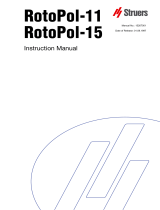 Struers RotoPol-11 Manuel utilisateur
Struers RotoPol-11 Manuel utilisateur
-
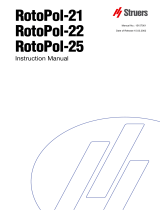 Struers RotoPol-21 Manuel utilisateur
Struers RotoPol-21 Manuel utilisateur
-
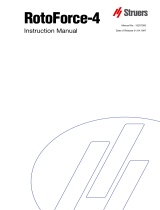 Struers RotoForce-4 Manuel utilisateur
Struers RotoForce-4 Manuel utilisateur
-
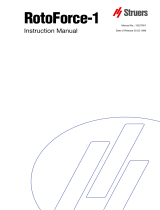 Struers RotoForce-1 Manuel utilisateur
Struers RotoForce-1 Manuel utilisateur
-
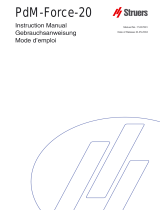 Struers PDM-Force-20 Manuel utilisateur
Struers PDM-Force-20 Manuel utilisateur
-
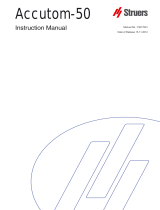 Struers Accutom-50 Manuel utilisateur
Struers Accutom-50 Manuel utilisateur


































































































































































































































































































































